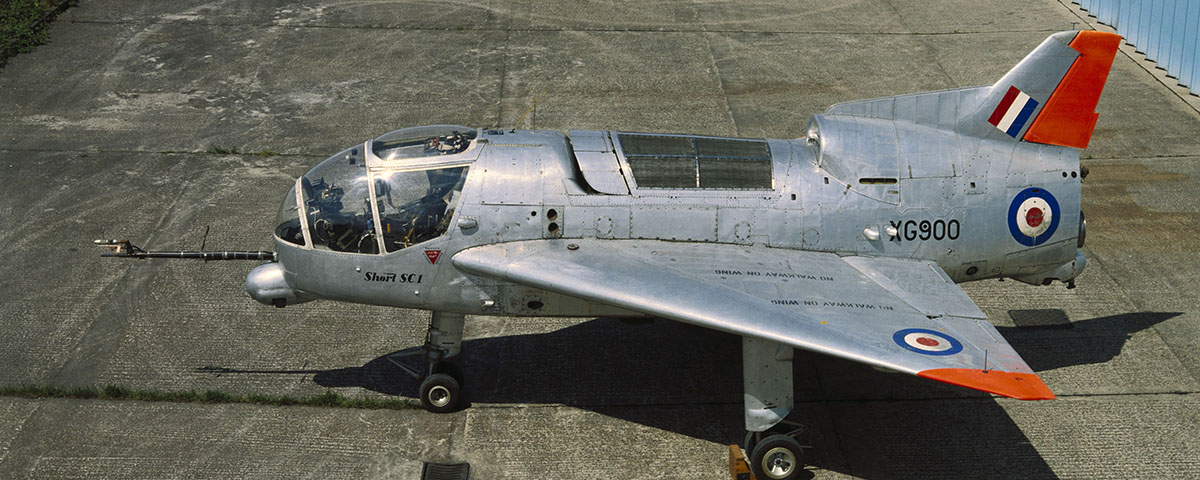Britain’s first fixed-wing vertical takeoff and landing airplane, the Short SC.1 was built in response to the Ministry of Supply’s Specification ER.143, issued in September 1953 for a VTOL research aircraft. Two of these tailless deltas were built at Short Brothers’ Belfast factory, each having four Rolls-Royce RB108 turbojet engines mounted vertically in a central bay close to the center of gravity, producing a combined thrust of 8,600 pounds, and a fifth RB108 in the rear for horizontal flight. The vertical engines could be swiveled about transverse axes to provide vectored thrust, and 10 percent of their output was bled to nose, tail and wingtip “puffer jet” outlets for pitch and yaw control at low speeds. The 8,000-pound plane boasted the first “fly by wire” auto-stabilizer control system in a VTOL design, as well as a fixed undercarriage with castoring wheels and long stroke oleos capable of cushioning a descent of 18 feet per second.
The first SC.1 prototype, XG900, first took off conventionally at the Royal Aircraft Establishment at Boscombe Down on April 2, 1957, had its first tethered vertical liftoff on May 26, 1958, its first free vertical takeoff on October 25 and its first transition flight on April 6, 1960. It was also shown at the 1958 and 1960 airshows at Farnborough, and flew the Channel both ways for the Paris Air Show in 1961. The second SC.1, XG905, crashed in Belfast due to a controls malfunction on October 2, 1963, killing test pilot John R. Green, but it was rebuilt.
The SC.1 tests yielded valuable data that would be applied to the Hawker Siddeley P.1127 and ultimately the Harrier. XG900 is preserved at the Science Museum in South Kensington, London, while XG905 can be seen at the Ulster Folk and Transport Museum in Cultra, Northern Ireland.





